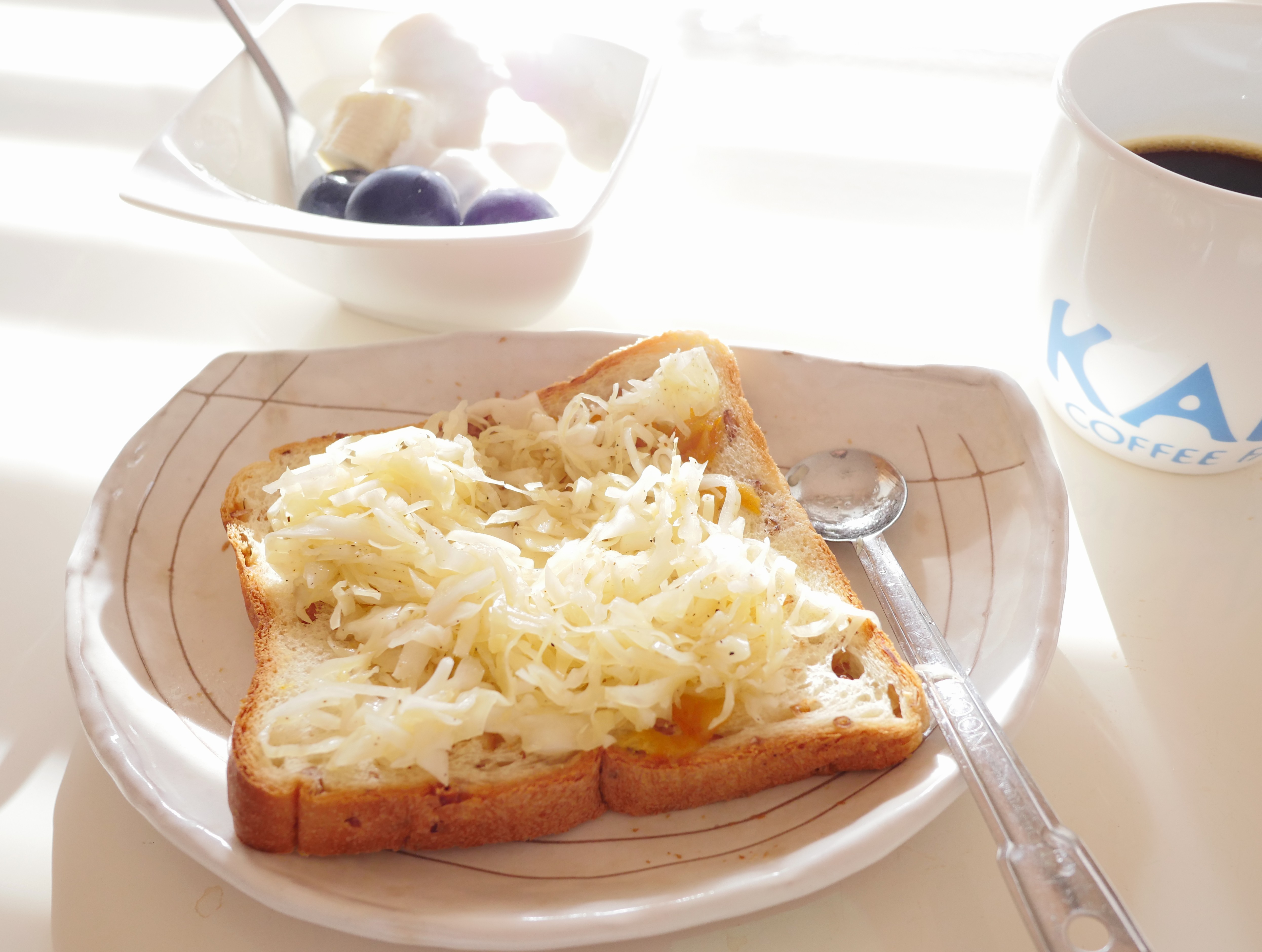Blog
食事と私/Food and Me
社会に出て定年まで食品業界で仕事をしていました。食べ物のおいしさを計る舌の感度には自信があるとは言えませんが、「一流」と言われるおいしいものを長年にわたって味わう機会は、人並み以上に恵まれていたと思います。
ただ、働き盛りのころは健康を考えた節度ある食習慣に無頓着で、朝食は抜き、昼食は大盛り、夕食は暴飲暴食という日々でした。体重は増え、コレステロール値は基準を大きく上回り、50歳を過ぎてからは薬に頼るようになっていました。
食のマーケティングを学びながら、生活者視点で「簡便でありながらおいしく健康的な食事」を提案するのが仕事でしたが、肝心の自分自身の食事や健康は後回しだったのです。
定年を迎えて以降は、それまでのルーズな食生活とは正反対に、健康的な食事を自ら作り、規則正しく食べるようになりました。いったい何がきっかけだったのでしょうか。
第二の職業に就いた現在も、余暇の時間は現役時代とさほど変わりません。コロナ禍を機に始めたそば打ちを、自宅で打って食べ、また打って…と繰り返すうちに、「料理する行為」から「味わうこと」まで、すべてが趣味のように楽しく感じられるようになりました。
そば打ちというひとつの行為を掘り下げる体験は、そば以外の料理にも応用が利きました。そば包丁で幅1.5mmに均等に切る作業や、菜切包丁でねぎを薄く輪切りにすることに慣れてくると、キャベツの千切りも、要領は違ってもボールペン字ほどの細さで切るのは簡単です。
そして何より、自分で作るとおいしく感じます。
そばのような繊細な食品は、機械による生産では加水量が制限され、流通やコストを考慮すると塩やグルテンなどの添加物を加え、そば粉の割合を減らさざるを得ません。そのため食感や風味にも影響が出てしまいます。
手打ちであれば、そば粉に少量の小麦粉と水を加えるだけ。めんつゆも、醤油・みりん・白ザラメで作った「かえし」に、鰹・昆布・しいたけのだしを合わせれば、体に沁みるようなうま味を感じます。
そばに限らず、材料にこだわった手作りの料理は、食材や調味料そのもののうまみや風味をじんわりと感じられます。素材の選定や配合を工夫することで、自分の好みや体調に合った食事を作ることもできます。
うま味調味料は便利ではありますが、先味の刺激が強く、私にはゆったりとおいしさを味わう感覚が薄れてしまうように感じます。醸造の過程でたんぱく質がほどよく分解されて生まれるペプチドによる、後味の長いうま味こそ、体に沁みて満足感を高めてくれます。
最近ではそば作りにとどまらず、朝食にもこだわるようになりました。
現在の定番は、スライスキャベツをサンドしたライ麦パンと、輪切りバナナ入りヨーグルトです。トーストしたパンに薄くバターを塗り、家内が作ったオレンジジャムをのせ、その上に味つけしたキャベツを挟みます。
キャベツは4分割して葉を3枚ほど取り、細かく千切りに。芯の部分は繊維に垂直に薄く輪切りにします。味つけは、オリーブオイル小さじ1杯を加えて混ぜ、きび糖小さじ1杯、米酢小さじ1.5杯、最後に塩コショウ少々。酢の酸味は慣れるまで強く感じるかもしれませんが、次第においしく食べられるようになります。
こうした積み重ねの結果、体調も良くなりました。便通が整い、血圧も安定しています。LDLを下げる薬は続けていますが、HDL値が改善しました。
このレシピを皆さんにお勧めするつもりはありません。
ただ、「自ら楽しみながらオリジナルの食事を創り、味わうこと」が健康な体づくりにつながることを知っていただければと思います。
タイパ(タイムパフォーマンス)の時代、食事づくりに手間をかける余裕は少ないかもしれませんが、できるだけ若いうちから週に一度でも「手作りの食事」に挑戦する習慣を身につけることは、きっと後悔しない大切なことだと、今になってつくづく感じています。
“Food and Me”
I worked in the food industry from the time I entered society until my retirement.
I can’t say I have a particularly refined palate, but over the years I was fortunate to experience many of the finest foods available.
However, during my busy working years, I paid little attention to healthy eating habits—skipping breakfast, eating large lunches, and often overindulging at dinner.
My weight increased, my cholesterol levels soared, and after turning fifty, I began relying on medication.
While studying food marketing, my job was to develop convenient, tasty, and healthy meal ideas from the consumer’s perspective.
Ironically, I completely neglected my own diet and health.
After retirement, I began doing the opposite of what I had done before—cooking healthy meals for myself and eating regularly.
I often wonder what brought about such a change.
Even after starting my second career, my schedule remained much the same as before.
During the COVID-19 pandemic, I took up soba noodle making as a hobby.
As I repeatedly made, cooked, and ate my own soba at home, I discovered that the entire process—from preparation to tasting—had become an enjoyable hobby in itself.
This focus on mastering the art of soba making turned out to be useful beyond soba.
Once I became comfortable cutting noodles evenly to 1.5 mm with a soba knife and slicing green onions thinly with a vegetable knife, I found that shredding cabbage—though requiring a slightly different technique—was just as easy, producing strands as thin as the line of a ballpoint pen.
And when you make food yourself, it simply tastes better.
Soba noodles are delicate, and in factory production the amount of water used is limited.
To meet distribution and cost requirements, manufacturers must add salt, gluten, or other additives, and often reduce the percentage of buckwheat flour.
These adjustments inevitably affect the flavor and texture.
When making soba by hand, however, you need only buckwheat flour, a little wheat flour, and water.
For the dipping sauce, combining a base made from soy sauce, mirin, and white sugar with a broth of bonito, kelp, and dried shiitake mushrooms produces a deep, soothing umami flavor that truly nourishes the body.
Handmade dishes that use carefully selected ingredients allow you to fully experience the natural taste and aroma of the food itself.
By choosing your ingredients and adjusting the proportions, you can create meals suited to your own preferences and health.
Seasoning enhancers such as monosodium glutamate are convenient, but their initial sharpness makes it difficult for me to relax and savor the flavor.
In contrast, the long-lasting umami that comes from peptides produced through fermentation feels more natural and deeply satisfying.
Lately, my culinary interests have expanded beyond soba to include breakfast.
My current morning routine consists of rye bread sandwiches with shredded cabbage, and yogurt topped with banana slices.
I lightly toast the bread, spread a thin layer of butter, add homemade orange jam made by my wife, and place the seasoned cabbage between the slices.
To prepare the cabbage, I quarter it, finely shred about three leaves, and slice the core thinly across the grain.
For seasoning, I mix in one teaspoon of olive oil, one teaspoon of raw cane sugar, one and a half teaspoons of rice vinegar, and a pinch of salt and pepper.
At first, the vinegar may taste a bit strong, but you’ll soon come to enjoy its freshness.
Through this daily routine, my body has felt better overall—my digestion improved, my blood pressure stabilized, and while I still take medication to lower LDL, my HDL levels have increased.
I’m not suggesting that everyone follow this exact recipe.
What I truly hope to convey is that creating and enjoying your own original meals can lead to better health and a deeper appreciation of food.
In this era of “time performance,” people may feel they don’t have the luxury to spend much time cooking.
Yet I believe that cultivating a habit of preparing a homemade meal even once a week—especially while you are still young—is something you will never regret.
That’s what I have come to realize, with a sense of reflection and gratitude.
